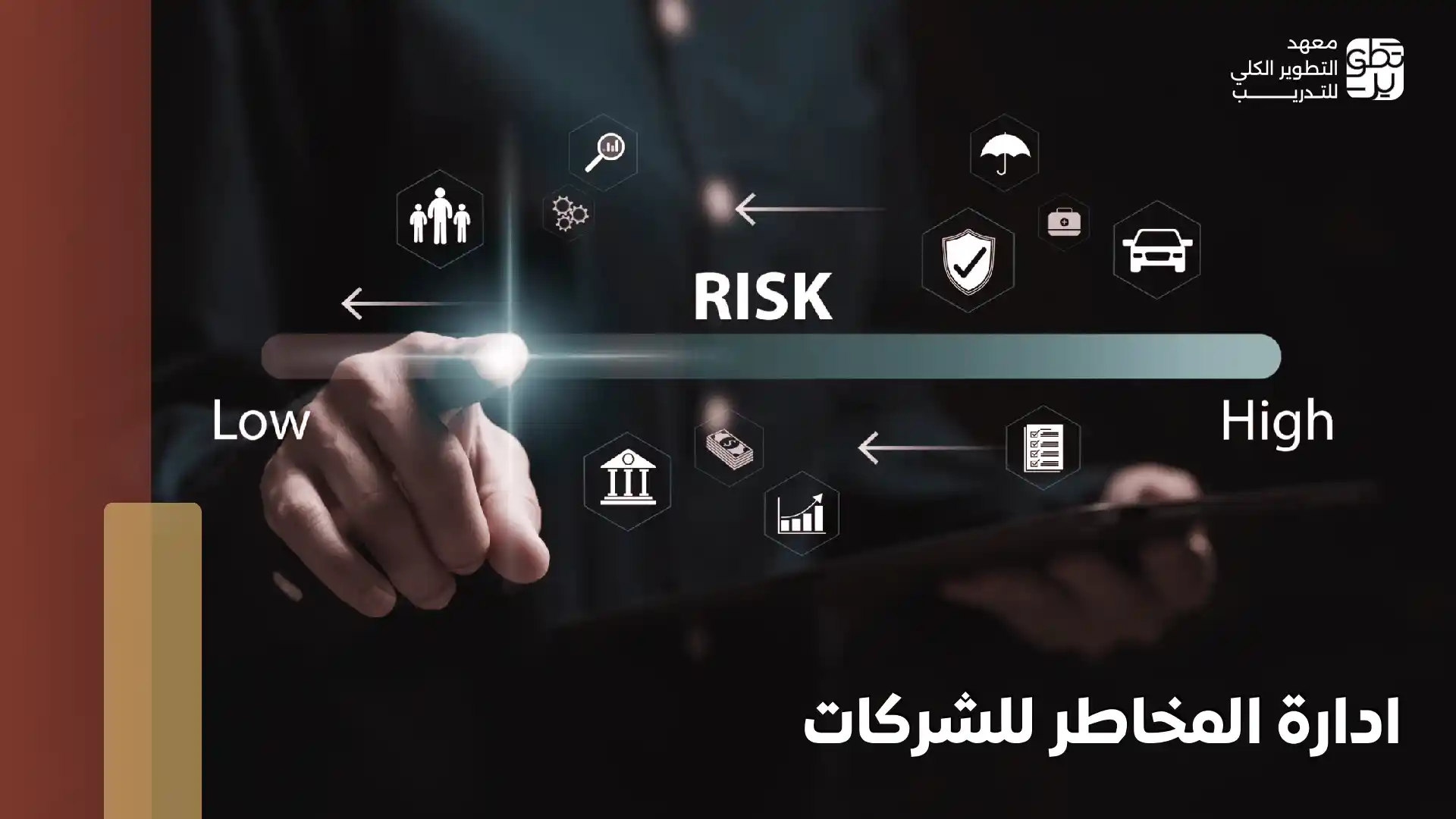
Risk management has become a fundamental pillar for ensuring stability and growth in a challenging environment. Both businesses and governmental organizations face increasing pressures that require robust risk management systems.
In this article, we explore the importance of risk management for businesses and its role in protecting operations. We then highlight practical steps for implementing risk management, addressing tools and effective methods for facing challenges. We also compare risk management in government institutions and businesses to clarify key differences. Finally, we conclude with a summary of risk management as a core map for organizational success.
The Importance of Risk Management for Companies
Risk management for companies is no longer an optional addition; it has become a necessity to ensure stability and growth in a work environment full of challenges and changes. It is the tool that enables organizations to protect themselves and avoid potential losses. The importance of risk management is as follows:
- Reducing Potential Losses: Risk management reduces potential losses and helps preserve financial and human resources.
- Ensuring Business Continuity: Emergency plans ensure the continuation of operations even in the face of crises and disasters.
- Enhancing Investor and Customer Confidence: Having an effective risk management system enhances the company's reputation, making it more attractive to investors.
- Better Decision-Making: Proper risk assessment makes decisions more informed and increases the chances of success.
- Compliance with Regulations: Risk management in companies and government institutions ensures compliance with laws and avoids fines.
- Improving Organizational Performance: Minimizing unexpected surprises helps in planning and achieving goals efficiently.
Risk management in companies and government institutions is not just a procedural process; it is a fundamental element for achieving growth and ensuring trust and success in the long run. Therefore, it is essential to understand what risk management is and its importance.
Practical Steps for Implementing Risk Management in Businesses
Implementing risk management in businesses requires a clear methodology and well-thought-out steps to ensure desired outcomes.
The goal is not only to avoid losses but also to enhance competitiveness and ensure long-term stability. The process is generally carried out as follows:
- Identify Potential Risks: Identify all internal and external risks that could affect operations, such as financial, operational, or technological risks.
- Analyze and Evaluate Risks: Assess the size and likelihood of each risk to determine its priority and impact on the company.
- Develop Response Plans: Create practical plans to address risks, either by reducing their likelihood or mitigating their impact.
- Implement Strategies: Apply the solutions identified, such as monitoring systems, employee training, or securing resources.
- Monitoring and Review: Regularly monitor performance and update plans when new challenges arise or market conditions change.
- Communication and Awareness: Ensure all employees are involved in the risk management process to create an informed and responsive work environment.
By following these steps, businesses and governmental institutions can build an effective risk management system that preserves resources and enables them to face challenges with confidence.
Effective Tools and Methods in Risk Management for Businesses
Risk management for businesses goes beyond creating theoretical plans; it requires practical tools and methods that allow management to face challenges and minimize their effects. Below are the key methods that help organizations build a comprehensive risk management system:
- Risk Avoidance: When discovering that a particular strategy carries significant risks that outweigh its benefits, it is canceled from the start. This decision protects the company from potential losses that exceed the expected returns.
- Risk Reduction: Developing plans to reduce the impact of risks when they occur. An example is using electronic protection systems to mitigate the effects of cyberattacks.
- Continuous Risk Evaluation: Conduct periodic reviews of operations and analyze updates to ensure that mitigation strategies remain effective amidst developments.
- Risk Transfer: Assigning some financial burdens to an external party, such as insurance companies. While it doesn’t eliminate risks entirely, it reduces the direct financial pressure on the company.
- Innovation and Development: Investing in modern technologies such as artificial intelligence or data analytics systems helps predict risks early and develop more effective solutions.
- Risk Acceptance: This option is used when the cost of addressing the risk is greater than its potential impact. In this case, the company takes on the risk, especially if the likelihood of it occurring is low.
By adopting these diverse tools or enrolling in a risk management course in Riyadh, businesses and governmental institutions can improve their risk response, enhance readiness, and boost the chances of success and growth in a challenging environment.
Differences Between Risk Management in Governmental Institutions and Businesses
Risk management is a vital tool for both governmental institutions and businesses, but it differs in objectives and methods due to the nature of each sector. Understanding these differences helps in crafting strategies that achieve the best results.
|
Element |
Businesses |
Governmental Institutions |
|
Objectives |
Protect profits, increase market share, achieve growth |
Protect public interest, ensure compliance with regulations, maintain service continuity |
|
Types of Risks |
Financial, market-related, brand reputation, innovation |
Security, legal, public policies, social stability, natural and health disasters |
|
Decision-Making |
Relatively fast, focusing on competition and profitability |
Slower and more complex, subject to multiple regulatory and legislative levels |
|
Mitigation Methods |
Insurance, technology, adjusting business strategies |
National emergency plans, inter-ministry cooperation, coordination with international bodies |
|
Measurement Standards |
Profit increase and loss reduction |
Community satisfaction, service stability, legal compliance, and transparency |
While the principles of risk management are the same, businesses focus on profitability and growth, while governmental institutions focus on serving the community and stability. Understanding these differences helps leaders select the most appropriate tools and methods for each sector. You can also learn about the difference between risk management and crisis management.
Risk Management Summary
The risk management summary highlights that the success of any institution depends on its ability to handle threats before they turn into crises. Businesses face financial, operational, and even technological risks, while governmental institutions focus more on risks related to policies and public services.
Risk management for businesses requires flexible and responsive systems, while risk management in governmental institutions needs greater transparency and accountability to the community. A clear understanding of these differences, coupled with a culture of continuous evaluation and prevention, makes risk management a tool for supporting growth and accountability simultaneously.
In conclusion, risk management for businesses is the cornerstone for protecting assets and ensuring continuity, whether in the private sector or in governmental institutions.
By understanding its importance, implementing clear practical steps, and using well-thought-out tools and methods, any institution can build a flexible system capable of facing crises. Investing in risk management is an investment in the future, and you can also explore the different types of crisis management and their importance.
Frequently Asked Questions
How does risk management contribute to business success?
It reduces unexpected losses, supports informed decision-making, and helps achieve stability and continuous growth.
What are the main challenges in risk management for institutions?
Lack of accurate data, low risk awareness among employees, and the difficulty of predicting rapid changes in the market or regulatory environment.

















